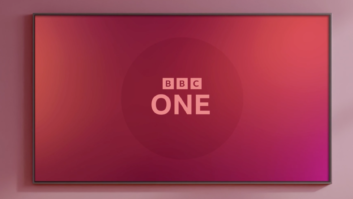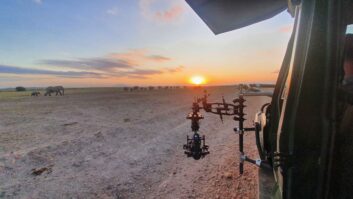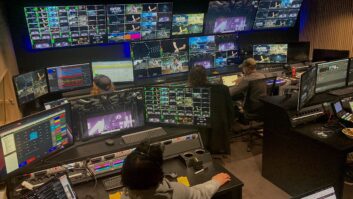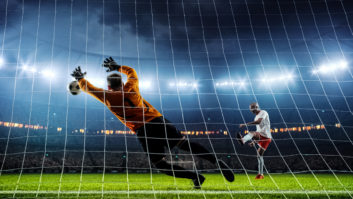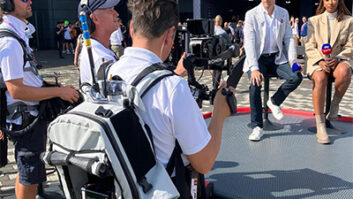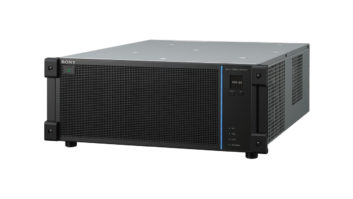Corporate communications production company, Impact Image, has just undertaken a specialist commission to provide aerial photography with the UK’s famed Red Arrows aerobatic team shot in HD.
The BBC commissioned IWC Media to produce a documentary following the selection process for new pilots into the Arrows, the world’s premier aerobatic team. This selection process is unique within the RAF as the new pilots are chosen by the team itself, unlike any normal RAF posting. The programme is currently in the editing process and once complete will be broadcast on BBC1 over the August Bank Holiday weekend.
It was the Red Arrows themselves who recommended that Impact Image undertake the aerial sequences as they are acknowledged leaders in filming military fast-jet action sequences and had worked with them on previous projects. Impact Image also provided a vital liaison point between IWC Media and the team.
Bob Hayes, production director at Impact Image explained: “The decision to shoot in HD was taken early on. An Ikegami HDL-20 ultra-compact camera was chosen with a Fujinon 4.8mm HD prime lens to record onto a Sony HDW-S280 HDCAM recorder. Camera mounts were engineered to fit either in the cockpit looking at the pilot or in a specially modified pod positioned under the aircraft which gave a spectacular rear-facing view of the formation.
“We flew approximately 40 times in two weeks and the equipment experienced G-forces of 2.5G to 8.5G with no problems whatsoever. We were really impressed with the performance of the Sony S280 deck which withstood these unusually extreme conditions,” he added.
Set up and operation for each flight itself had to be handled with military precision. Bob Hayes and Steve Case, technical operator for the BBC worked with the team’s engineers to prepare the camera before each flight. They closed up the panels and started the system just as the pilot was getting into the aeroplane. “All exposures had to be made manually before take off and any camera position change made between flights meant we had to recalibrate the new cable from the CCU Unit. It all had to run like clockwork as the turn-round between flights is very tight during training and the team can’t afford to wait for you,” Hayes said.
In spite of having no time to pre-test the installation, Martin Williams, producer/director of the documentary said of the results: “We were gobsmacked at the clarity of the footage. In an HD wide shot you can see the pilot turning his head and the ripples in the ocean hundreds of feet below, at the same time. This technology meant we could put the camera in positions where a film camera would never have fit, so it’s truly ground-breaking. We set up a monitor on location to review the rushes each day and without fail a small mob would cluster around and simply gawp. Stunning.”
